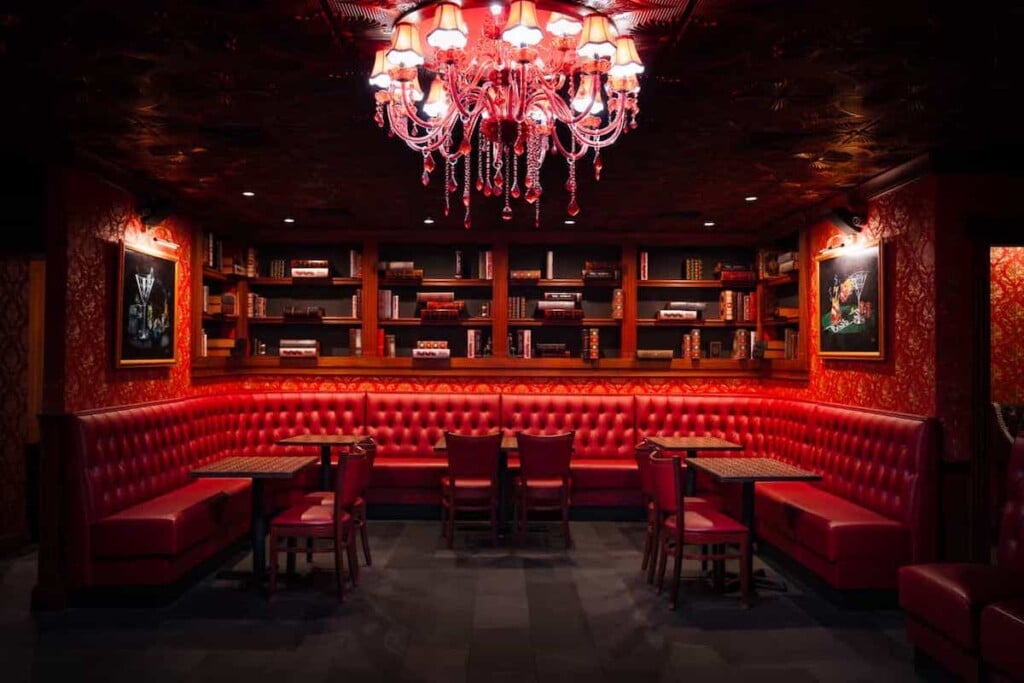Letters to the Editor may
be sent to: Honolulu Magazine, P.O. Box 913, Honolulu, HI, 96808-0913, faxed:
537-6455 or e-mailed: letters_honmag@pacificbasin.net “CHASING
THE BUZZ,” OCTOBER 2004
John Heckathorn’s Dining column on new restaurants
in Honolulu. I was amazed to read John Heckathorn’s statement,
in his review of Tudo de Bom, that, “A vegetarian can fill up on … fish stew …”
Perhaps all the meat Heckathorn consumes has impaired his intellect, and he should
consider cutting back. As a lacto- pisco- ovo-vegetarian I’m accustomed
to all the degrees of general ignorance/stupidity regarding people who try to
limit the amount of killing that goes into their sustenance. But I expect a tad
more awareness from someone who writes about food and restaurants. It might be
time, as they say, to send this guy out to pasture and to “bring in some fresh
blood.” Or, kidding aside, someone with a better awareness about vegetarianism.
And you might take another look at your demographic; I suspect that your apparent
assumption that almost all your readers are meat-eaters may not be accurate. Dale
Evans, via e-mail “BROKE BUT HAPPY IN CHICAGO,” SEPTEMBER
2004
John Heckathorn’s Dining column on Chicago restaurants of note. I
just finished reading your fabulous reviews of those three Chicago restaurants,
and even though I had just finished lunch, I was hungry all over again. The photo
of the caviar tower was amazing! While most of your reviews should center around
Hawai’i, of course, please don’t leave out these occasional Mainland reports.
You did San Francisco a few years ago, just before a trip of mine, and I went
to one of the restaurants you recommended, Postrio, and had a fine meal-and I
wouldn’t have even heard about it if it hadn’t been for the review. Susan
Jaworowski, via e-mail “HAWAI’I GUIDE TO PRIVATE SCHOOLS 2005,” SEPTEMBER
2004
Our special supplement for parents considering private school for their
children. It’s a valuable tool to provide, the “Hawai’i Guide
to Private Schools,” for parents and students to be informed about various private
institutions in the Islands. Furthermore, Robert Witt, executive director of the
Hawai’i Association of Independent Schools, believes that Hawai’i’s public and
private schools stand together in contributing to the public good. I agree with
Witt. So, could it be possible to provide a “Hawai’i Guide to Public Schools,”
too? Besides publishing the grades of the public schools, some of which are indeed
failing, perhaps some positive, insightful information would also be helpful for
parents and students. I don’t think it would put a damper on anyone’s parade to
expose the positive nature of public schools, just like the private schools. Joyce
Choy, Honolulu
“CAN WE MAKE HONOLULU COOL?,” AUGUST 2004
A.
Kam Napier’s look at the City and County of Honolulu’s first attempts at smart-growth
development plans. I recently was given a copy of “Can We Make
Honolulu Cool?” by a friend who is active in the Portland, Ore., business community.
Your article is right on point about smart growth. We have a Metro government
here that is ruining our economy through its smart growth measures. Oregon is
in first place in unemployment, last place in economic growth and fourth in highest-priced
places to live of all the 50 states. One would think that if we have been practicing
smart growth for the past 10 years, we would be at least somewhere in the middle
or the top 10. Keep up the good work on this issue for Honolulu and other cities
in Hawai’i. I have been involved with the development of a 250-acre transit-oriented
development project for a private family in Washington County for the past 12
years. It has been a real experience. The main issue is, once the ball gets rolling
with the smart growth advocates, the goal posts for development are constantly
being moved. Phased planning is almost impossible because the rules are constantly
changing. The development cost is enormous and the new tenants and home buyers
pay the price. If the price can’t be paid, then the project goes nowhere, or public
subsidies must come to the table. Even with the subsidies, projects are failing. I
was really pleased that you quoted John Charles [analyst with the Portland-based
Cascade Policy Institute] in your article. I have known John for several years
and believe he is probably the most knowledgeable person there is on transportation
issues, and especially transit. Marty Sevier, Portland, Ore. I
thought that your article was too simplistic in its analysis of smart growth.
What your article failed to mention is that all cities in the world were created
based on mixed-use zoning. Before World War II, every city in the United States
was developed in grids utilizing mixed-use zoning. In the 1920s, street-car suburbs
were created around what is now called transit-oriented development. Your article
also fails to mention that oil, rubber and the Big Three corporations bought most
of the old streetcar lines, ran them into the ground in the 1940s and finally
shut them down in the ’50s to promote buses, automobiles, oil consumption and
highway construction. In recent years, people have been lured back to the
cities because of New Urbanism, which, for them, eliminates the daily commute.
San Francisco, for example, is a pedestrian-friendly and transit-oriented city.
One of the most famous, successful New Urbanism developments is SBC Park. San
Francisco neighborhoods offer mixed-use developments around different “Main Street”
areas. Oakland, Palo Alto, Berkeley, Mountain View and Emeryville have embraced
new and old urbanism, and are the most desirable neighborhoods in the Bay Area. I
have lived in Portland, Ore., in Orenco Station, a transit-oriented development.
It was great to be able to go into town to a party and just catch the MAX home. New
Urbanism and public transit work best in high-population-density places. Honolulu
is that kind of place, as are San Francisco and Portland, Ore. Some books to read
on the topic of smart growth are: The Death and Life of Great American Cities,
by Jane Jacobs, Suburban Nation: The Rise of Sprawl and the Decline of the American
Dream, by Andres Duany, Elizabeth Plater-Zyberk and Jeff Speck and New Urbanism,
by Peter Katz. Also check out www.newurbanism.org
and www.cnu.org. The question is, do we
want unique places where people gather naturally, or soulless, sterile suburbs?
Personally, I love cities with character, culture and a great public transit system. Alan
Loo, via e-mail Napier
responds: Let me
add The Geography of Nowhere, by James Howard Kunstler, for those who believe
that Big Oil stuck us with the automobile and soul-dead suburbs. But let me also
recommend a Sept. 29, 2004, feature from The New York Times, “The Autonomist Manifesto
(Or, How I Learned to Stop Worrying and Love the Road).” In it, John Tierney explores
at length the counterview of people he calls the “autonomists,” because they praise
the virtues of the individual autonomy provided by automobiles. He writes, “[T]he
autonomists argue that the car is not merely a convenience, but one of history’s
greatest forces for good, an invention that liberated the poor from slums and
workers from company towns, challenged communism, powered the civil rights movement
and freed women to work outside the home.” Tierney, a former Manhattanite, who
professes to hate his own car, gives these bold historic claims a fair hearing. |








